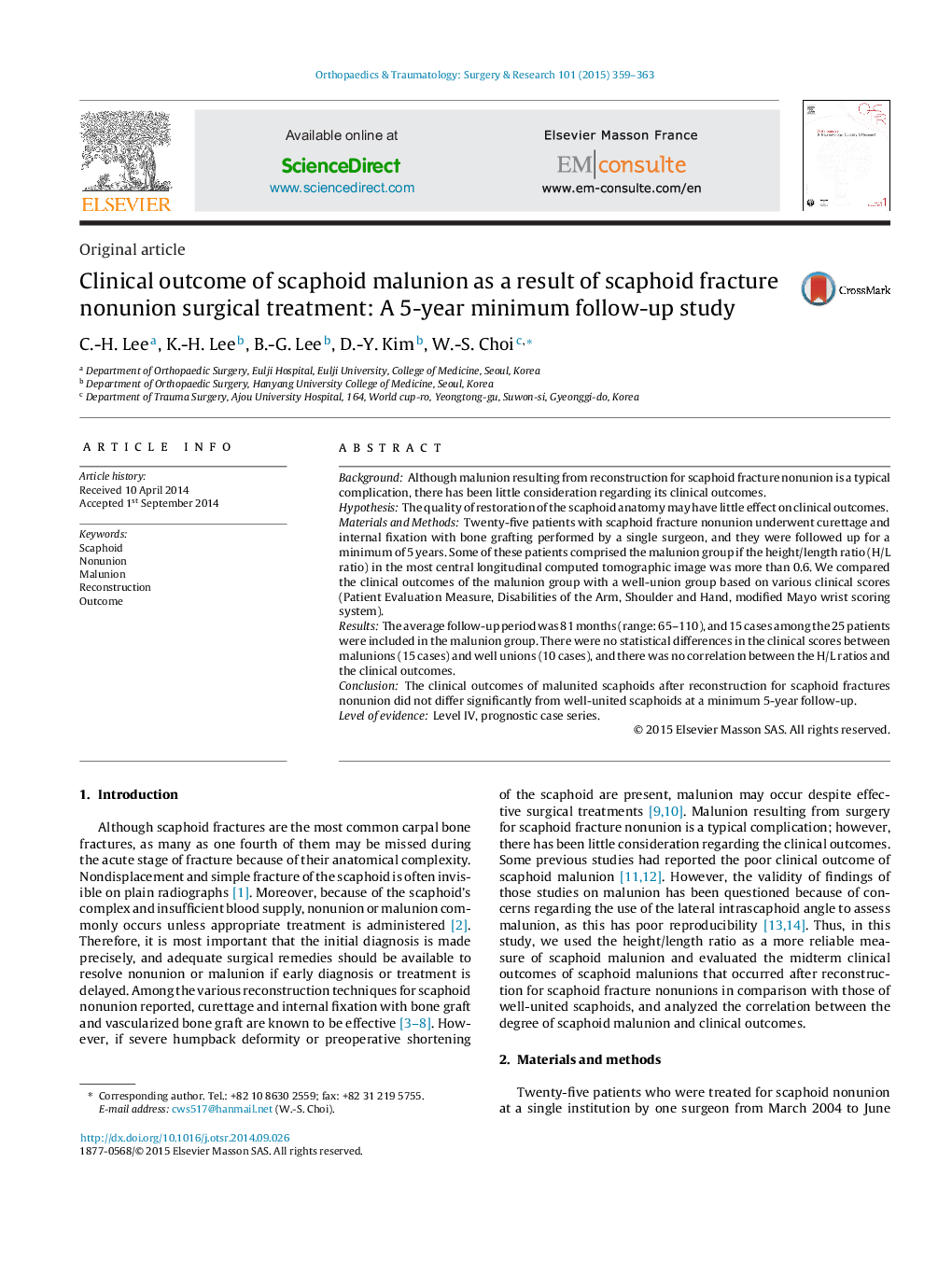| Article ID | Journal | Published Year | Pages | File Type |
|---|---|---|---|---|
| 4081181 | Orthopaedics & Traumatology: Surgery & Research | 2015 | 5 Pages |
BackgroundAlthough malunion resulting from reconstruction for scaphoid fracture nonunion is a typical complication, there has been little consideration regarding its clinical outcomes.HypothesisThe quality of restoration of the scaphoid anatomy may have little effect on clinical outcomes.Materials and MethodsTwenty-five patients with scaphoid fracture nonunion underwent curettage and internal fixation with bone grafting performed by a single surgeon, and they were followed up for a minimum of 5 years. Some of these patients comprised the malunion group if the height/length ratio (H/L ratio) in the most central longitudinal computed tomographic image was more than 0.6. We compared the clinical outcomes of the malunion group with a well-union group based on various clinical scores (Patient Evaluation Measure, Disabilities of the Arm, Shoulder and Hand, modified Mayo wrist scoring system).ResultsThe average follow-up period was 81 months (range: 65–110), and 15 cases among the 25 patients were included in the malunion group. There were no statistical differences in the clinical scores between malunions (15 cases) and well unions (10 cases), and there was no correlation between the H/L ratios and the clinical outcomes.ConclusionThe clinical outcomes of malunited scaphoids after reconstruction for scaphoid fractures nonunion did not differ significantly from well-united scaphoids at a minimum 5-year follow-up.Level of evidenceLevel IV, prognostic case series.
